Day 26 : Jenkins Declarative Pipeline
 Rahul Singh
Rahul Singh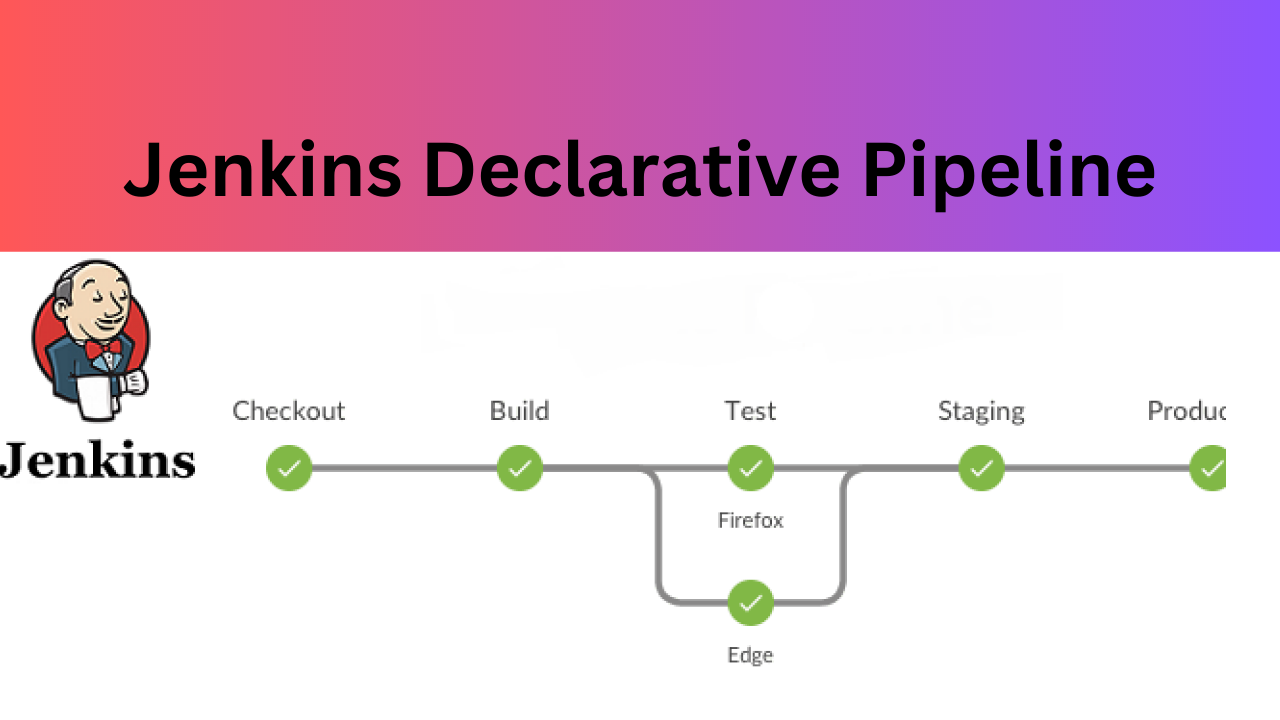
One of the most important parts of your DevOps and CICD journey is a Declarative Pipeline Syntax of Jenkins
Some terms for your Knowledge
What is Pipeline - A pipeline is a collection of steps or jobs interlinked in a sequence.
Declarative: Declarative is a more recent and advanced implementation of a pipeline as a code.
Scripted: Scripted was the first and most traditional implementation of the pipeline as a code in Jenkins. It was designed as a general-purpose DSL (Domain Specific Language) built with Groovy.
Why you should have a Pipeline
The definition of a Jenkins Pipeline is written into a text file (called a Jenkinsfile) which in turn can be committed to a project’s source control repository.
This is the foundation of "Pipeline-as-code"; treating the CD pipeline as a part of the application to be versioned and reviewed like any other code.
Creating a Jenkinsfile and committing it to source control provides a number of immediate benefits:
Automatically creates a Pipeline build process for all branches and pull requests.
Code review/iteration on the Pipeline (along with the remaining source code).
Pipeline syntax
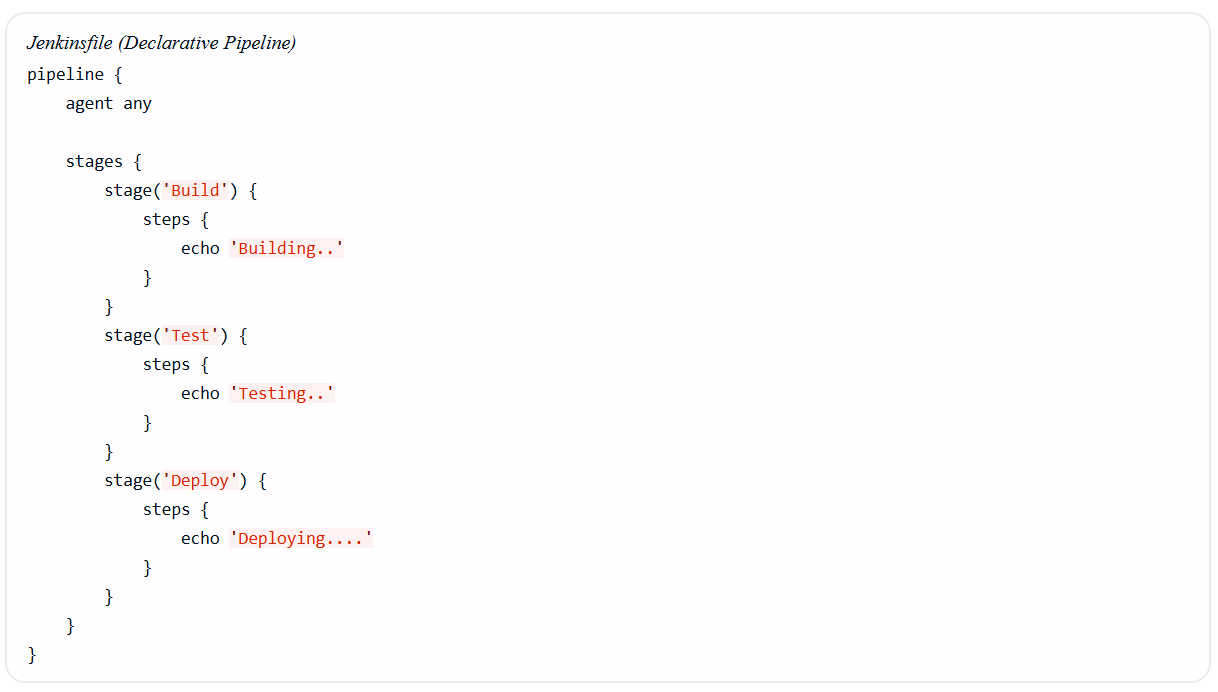
Task-01
- Create a New Job, this time select Pipeline instead of Freestyle Project. Complete the example using the Declarative pipeline
Login into Jenkins and click on new item. Select pipeline this time in place of freestyle project. Mention the name of your pipeline project
Scroll down to the Pipeline section, select Pipeline script (if writing the script inside Jenkins) or Pipeline from SCM (if using a Git repository)
Write Your Pipeline Script (If using Pipeline script)
Click Save and then Build Now to test it
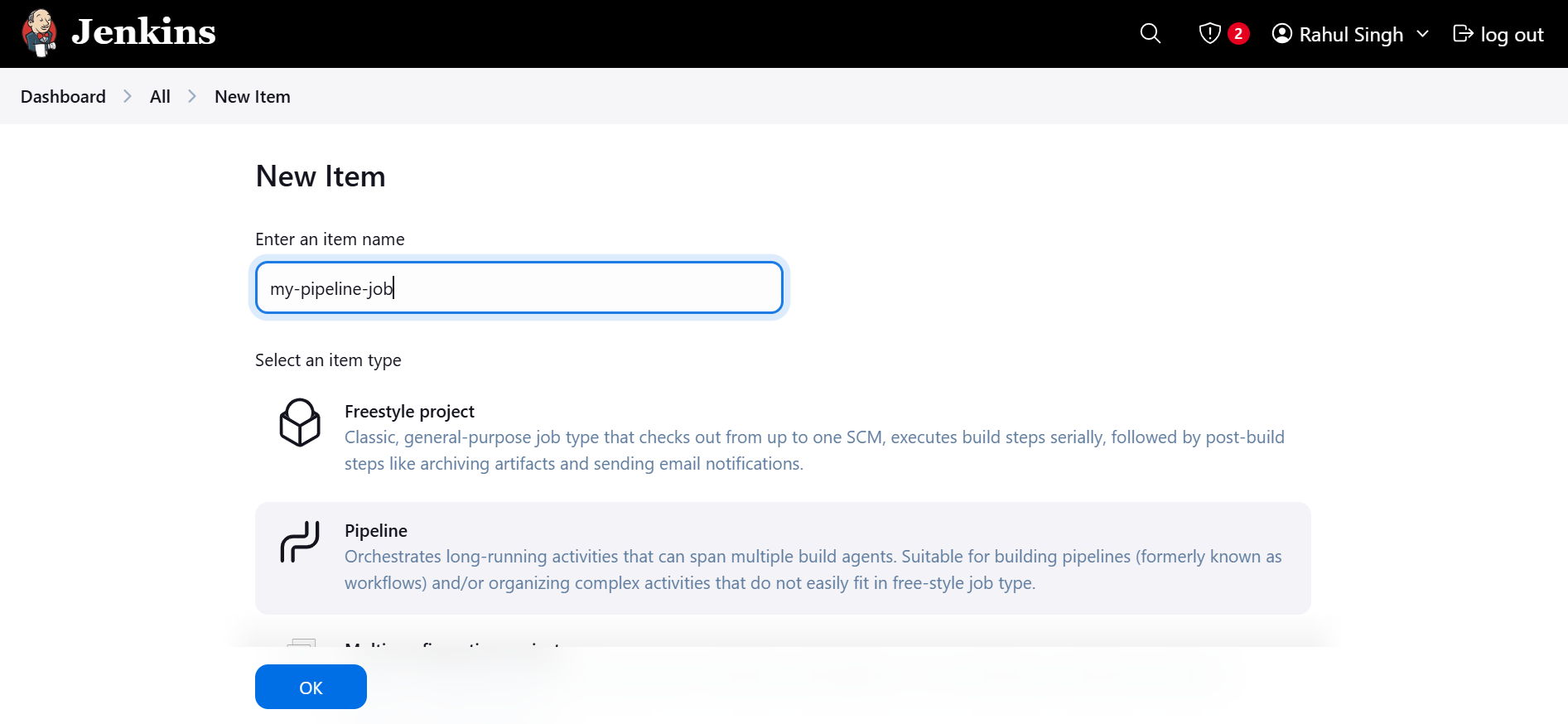
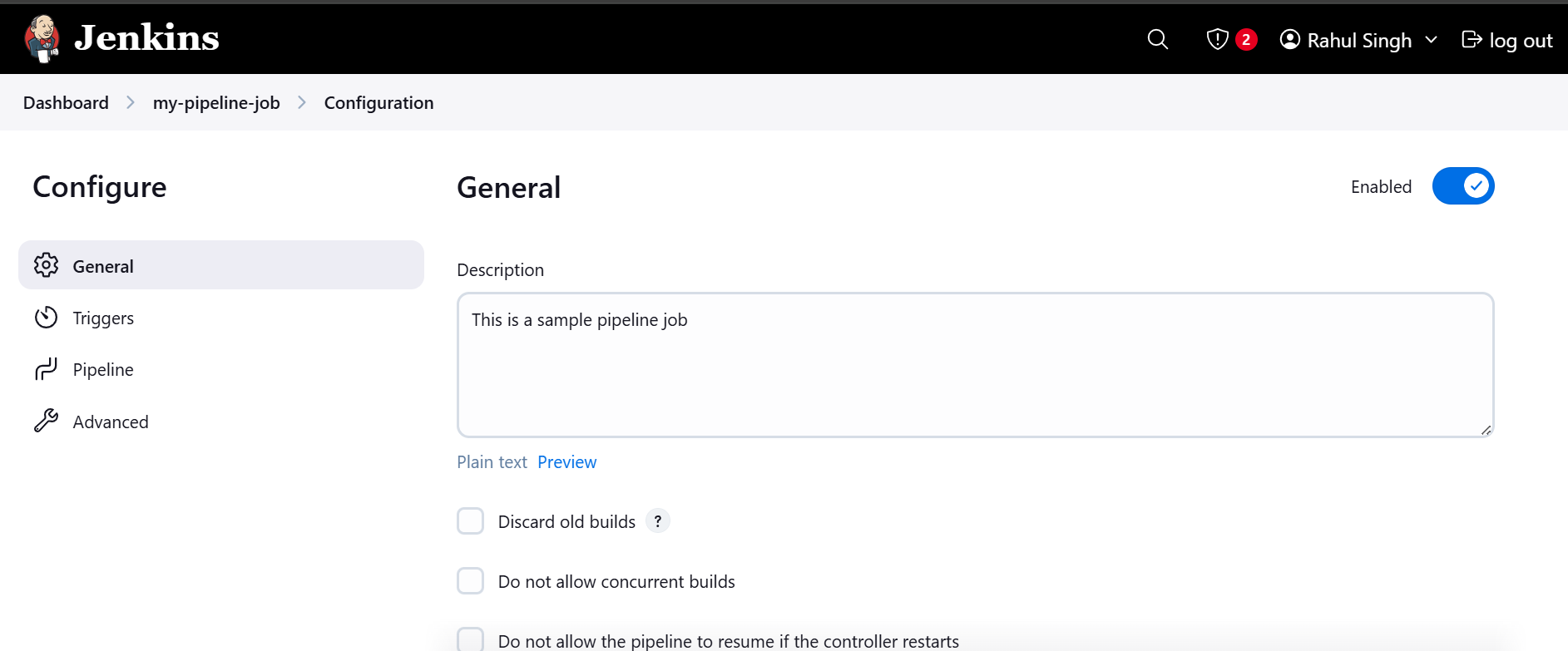

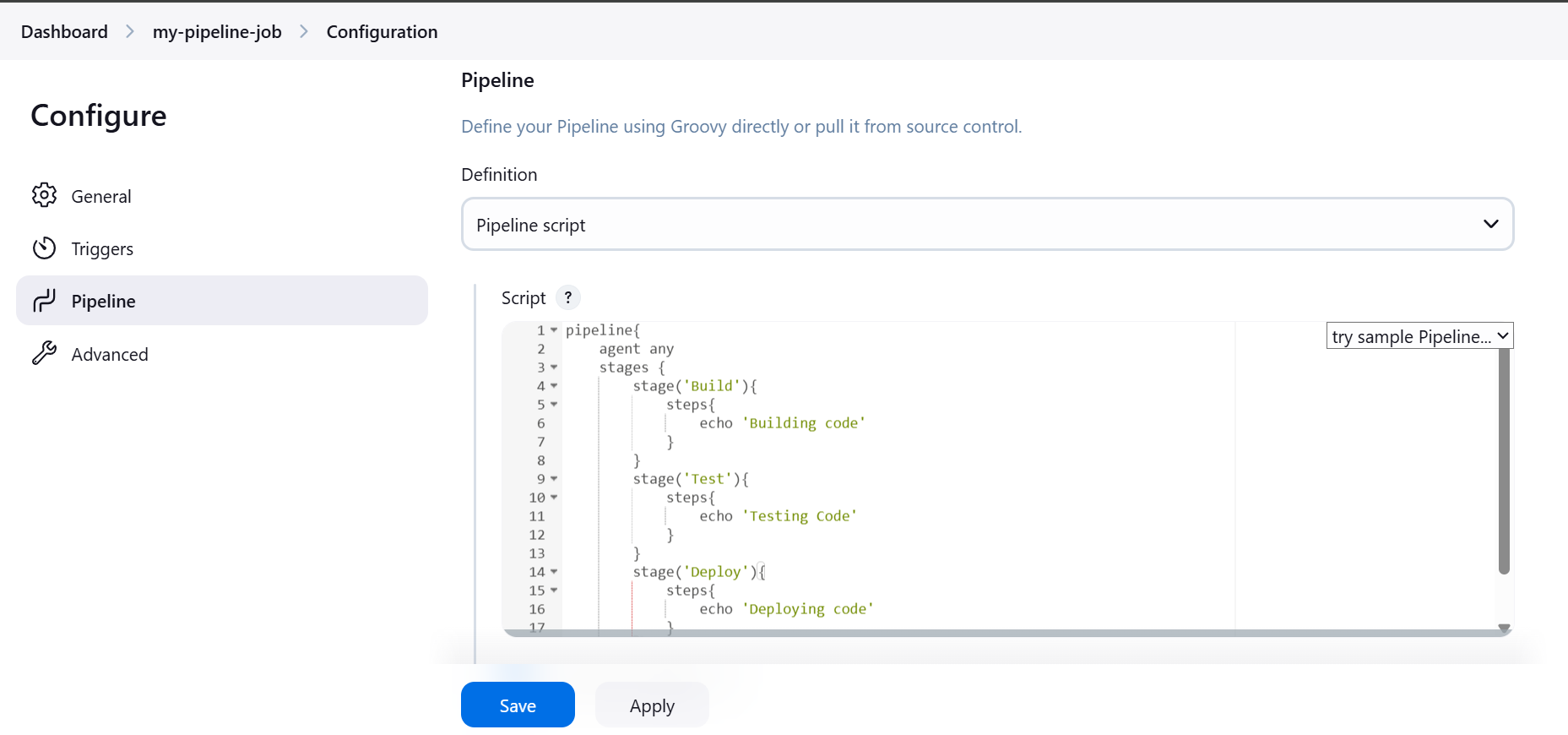
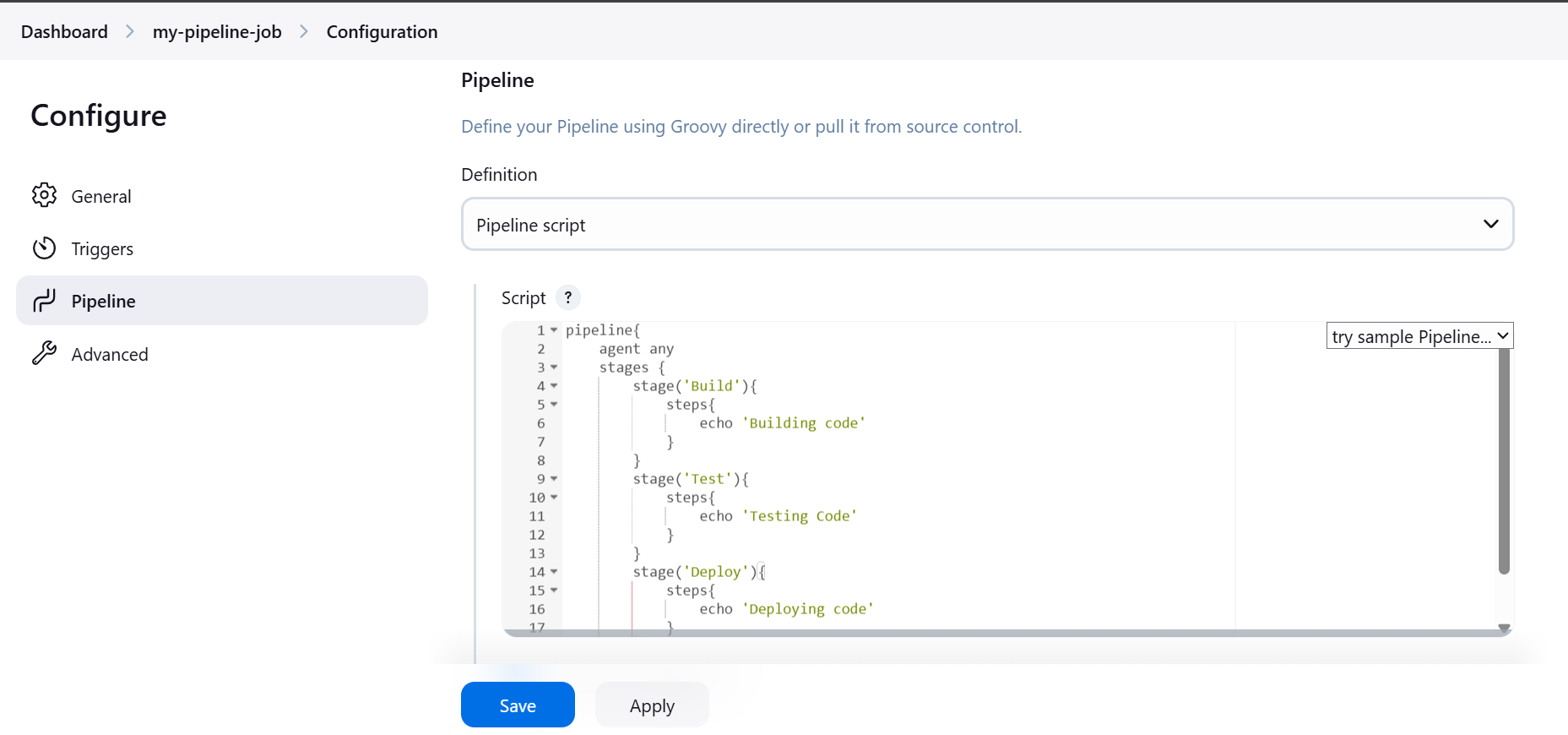
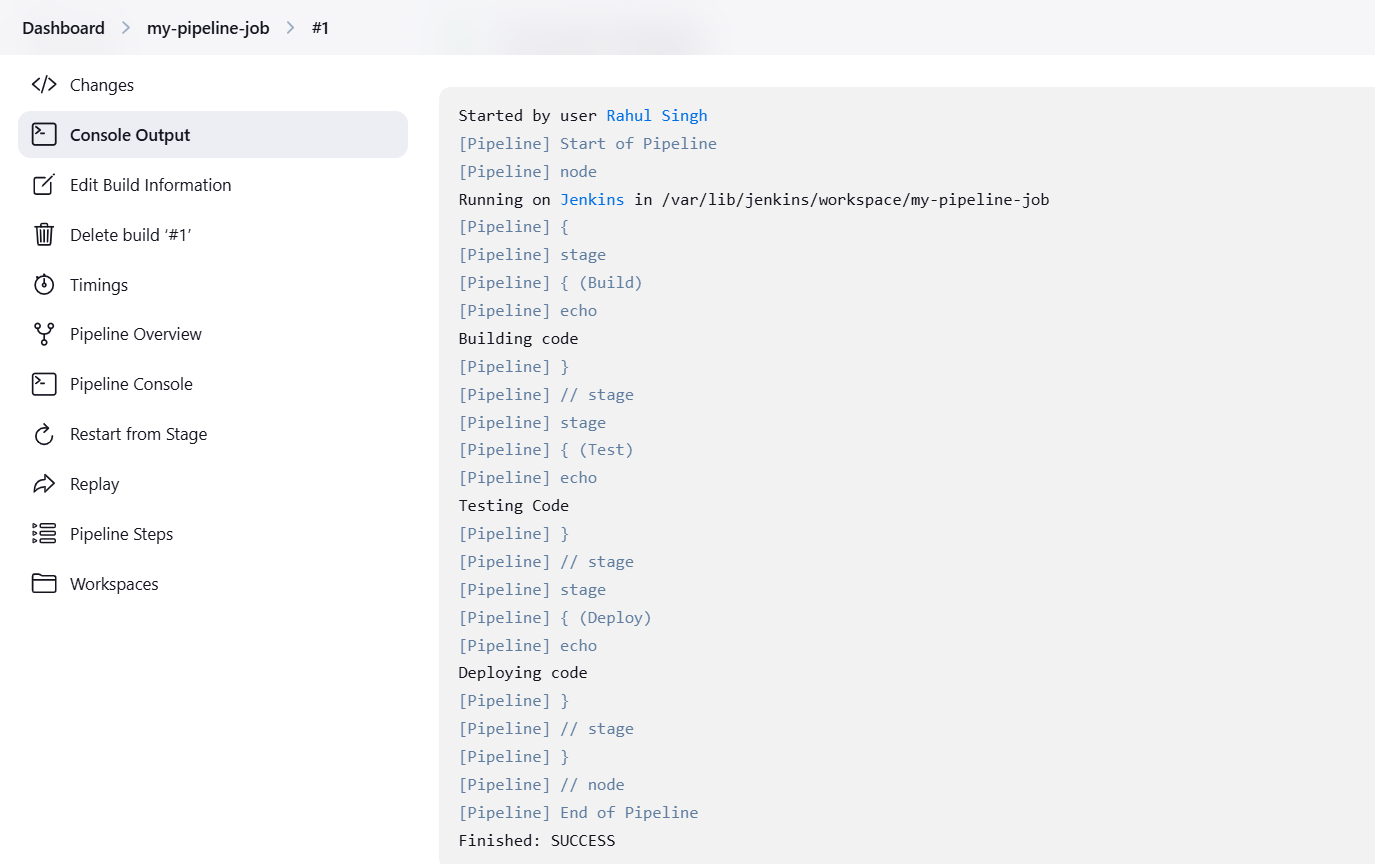
Pipeline Job
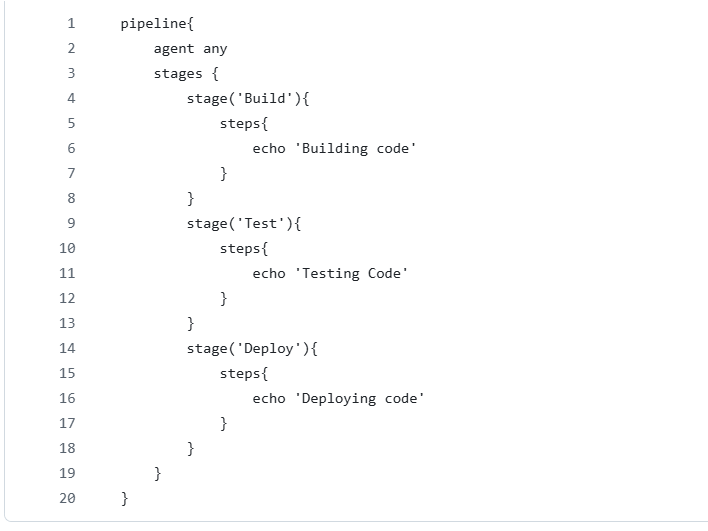

Subscribe to my newsletter
Read articles from Rahul Singh directly inside your inbox. Subscribe to the newsletter, and don't miss out.
Written by
